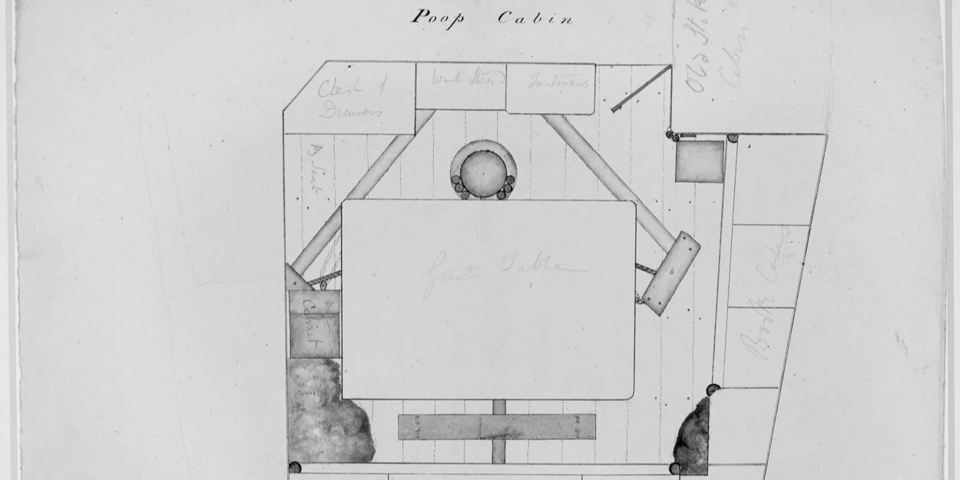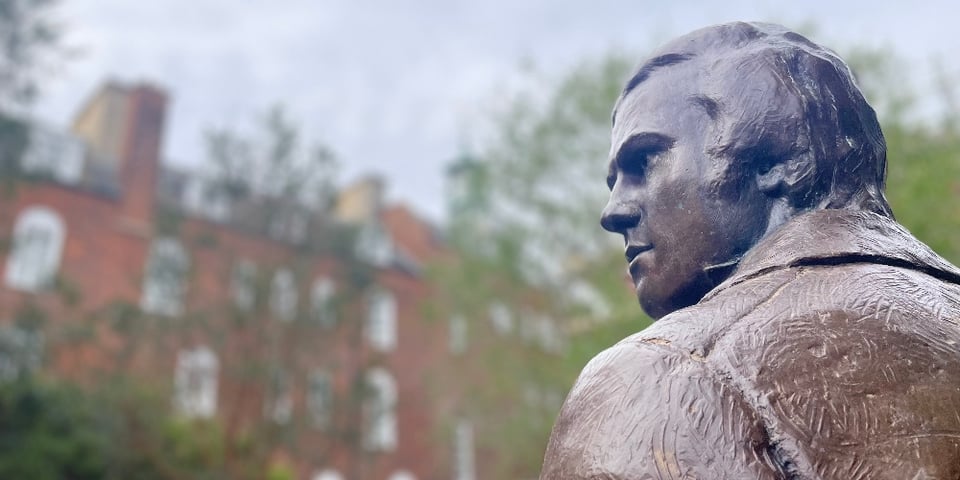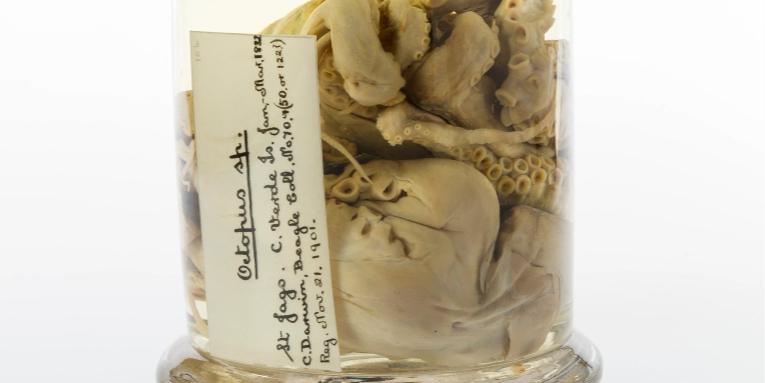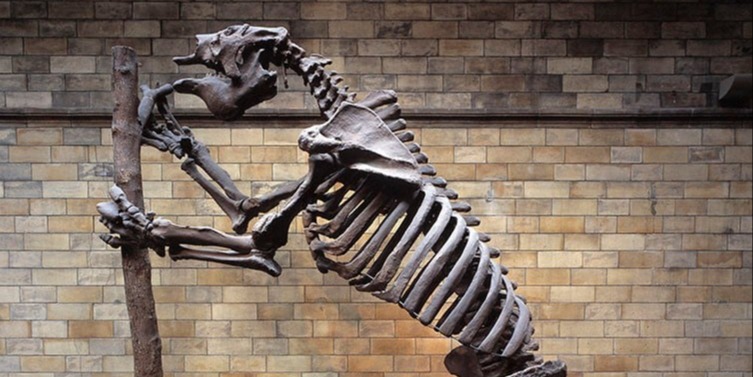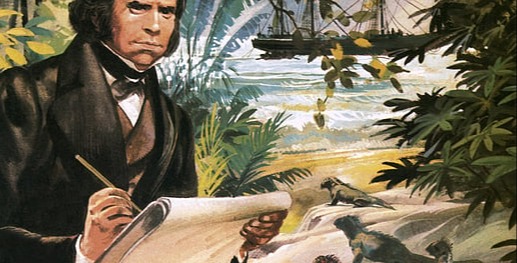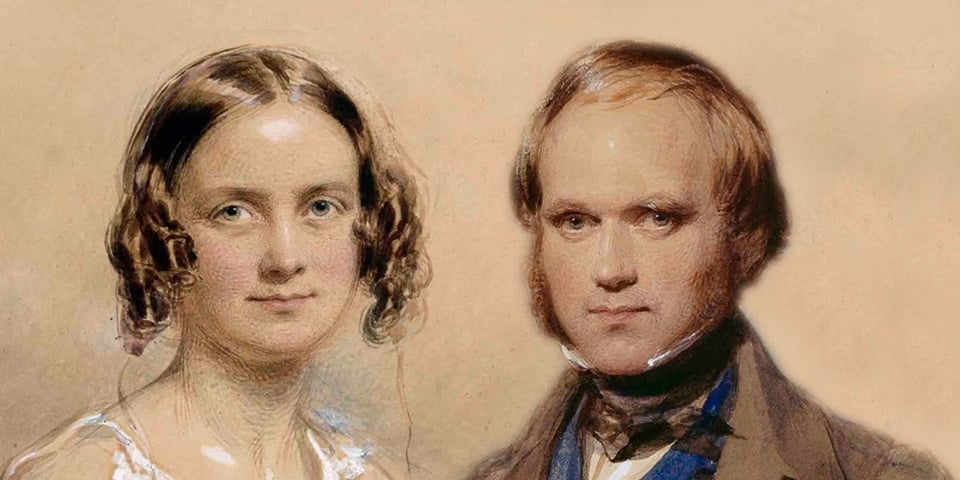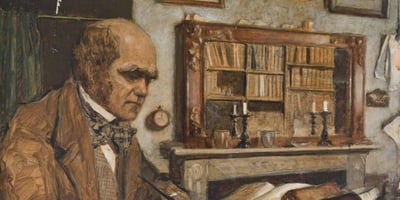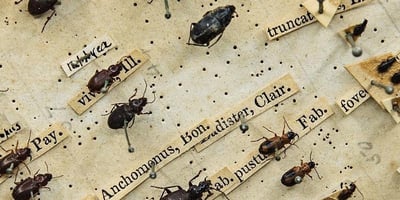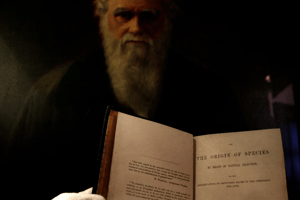The Story of Charles Darwin: Chapter III Read Chapter II here. Hunched over a desk, brows furrowed,...
The Collection Expands: Darwin’s Voyage, and Early Discoveries
The Story of Charles Darwin: Chapter II
Read Chapter I here.
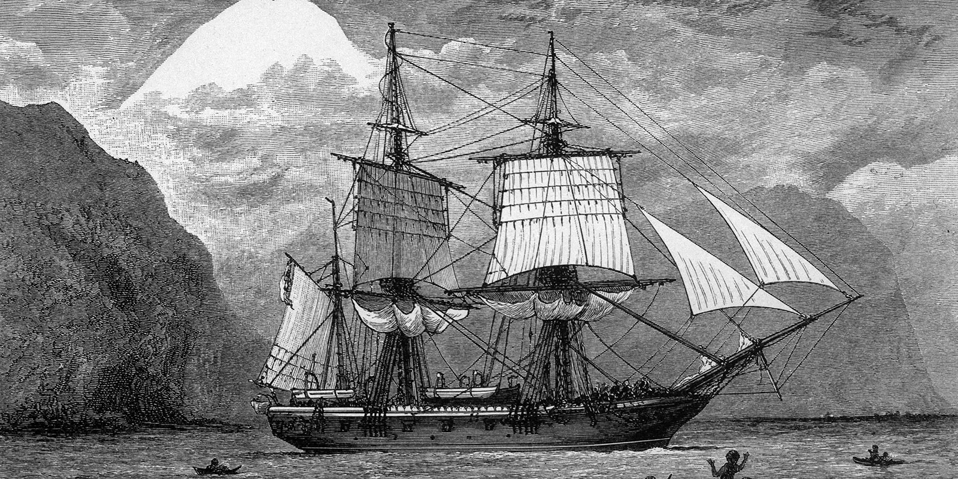
A loud clap of thunder stirred him from his sleep. He sat up in bed, dabbing at beads of sweat that had pooled on a forehead already encroached by deepened lines of concern and pain. For months now, he had been tossing and turning; lately, sleep only came in intermittent, uneasy bouts.
His stomach had been in knots for the last few days, and he did not know if it stemmed from his nerves, or the motion of the sea. Cooped up in confined quarters, he was aware of every lurch that the Beagle made in the raging storm, and not even his trusty copy of Milton’s ‘Paradise Lost’ could offer respite. Outside, rough currents continued to toss the small vessel around as if determined to topple it over, and rain beat down violently on the windows. Though Darwin had faith in the Beagle, he did wonder if she would get them safely through the night.
During his time on the Beagle, Charles Darwin developed a number of maladies. This sickness only escalated with time; Darwin suffered from terrible migraines, fevers, and later, gastrointestinal issues, fatigue, and nausea. Medical professionals believe his persistent ailments sourced from a possible, foreign ‘Chagas’ disease that he might have picked up on the voyage. This, coupled with the fact that the Beagle was a relatively small vessel compared to other ships, with little to offer in terms of accommodation and space, only served to exacerbate a sea-sick Darwin’s symptoms.
Although the Beagle continued to sail through treacherous waters, nothing could douse Darwin’s passion for natural history and the prospects of boundless exploration and collection. This zeal carried Darwin through a lengthy 5 years, despite his brief brush with death, while out on the water in 1833. While given the option to leave, Darwin persisted, having also felt a sense of responsibility towards his father, who he was determined not to let down again. Undeterred by the grisly nature of the expedition, and the dangers to his health that it posed, he continued onwards.
Learning to last a lifetime
Armed with an unquenchable thirst for knowledge, and his ever-present curiosities, Darwin first boarded the Beagle in the December of 1831. Among the many items that he brought with him on the trip, which was intended to be a survey mission, were several complex measuring tools, including microscopes, clinometers, and a pantograph and hygrometer. All of these proved to be extremely useful to him in studying rock layers, botanical samples, and in his taxonomic examination and classification of barnacles. Most importantly however, Darwin’s mental resources were aided by the Beagle’s and his own collection of books.
Darwin brought aboard an assortment of books, including Werner’s ‘Nomenclature of Colours’, Milton’s ‘Paradise Lost’, the Holy Bible, Lyell’s ‘Principles of Geology’, and Alexander von Humboldt’s ‘Personal Narrative’, gifted to him by his mentor and friend, John Henslow. The Beagle supplemented such reading with its very own collection of over 300 copies, in various languages, spanning across every conceivable category, as well as maps and voyage illustrations. To a young, excitable and impressionable Darwin, it was a haven of information and learning.
These contained colourful theories that watered the tree of his thoughts; they taught him to approach scientific study using different perspectives, giving him a well-rounded understanding of how living systems worked within the natural world. For instance, while Lyell’s theories imparted him with knowledge of how life on Earth underwent gradual, continuous change, Werner’s work gave him a structure within which to identify and segregate different species based on their physical characteristics.
Empowered by access to such materials, his expertise as both a fledgling naturalist and a collector grew, and his ideas took flight.
Pulling back the branches on some of Darwin’s finds
During our visit to Cambridge to gain a little more insight into the naturalist, we came across a little garden designed to commemorate his voyage, on the university campus. Sitting in the garden, we looked around at a variety of flora and fauna as Darwin would have across several trips, and it was not hard to imagine what he would have seen and been struck by. The difference was this; where we simply saw beautiful flowers and leaves, Darwin saw patterns and irregularities. Where we marvelled at the types of birds that perched upon branches, Darwin saw subtle variations in the curvature of beaks and feathers. A long history of childhood collecting ensured that his perceptions were coloured by inquisition in addition to wonder, in a manner that made him look for answers where there were none.
First stop: Cape Verde
A prime example of this arises from the Beagle’s trip to Quail Islands in Cape Verde. Noticing a colour contrast created by a white strip running across the length of cliffs on the island, Darwin collected rocks from above and below the strip to study the visual phenomenon. Upon taking a closer look, Darwin found that there were three distinct layers of rocks that the cliffs were composed of, which indicated that the natural environment was constantly adapting as the Earth aged. This notion played a fundamental role in shaping his own theory of evolution. In Cape Verde, Darwin also came across a species of octopus he believed to be bioluminescent. One of the first specimens to form a part of the vast collection that he amassed over time, the octopus was considered a novel find. However, other biologists later found that the specimen was neither bioluminescent, nor a novel discovery - even Darwin was capable of making mistakes.
A mammoth find
Darwin travelled onwards to present-day Argentina where, while rock hunting, he came across piles of broken bones and shells. Among these were several fossils belonging to gigantic prehistoric species, such as the giant ground sloth, and a giant rodent equaling the size of an elephant, beckoning his inner collector to resurface. Darwin diligently labelled these and added them to the Beagle’s collection.
Another of his impressive collections included coral samples. Littered along the floor of the Indian ocean, the marine species instantly caught Darwin’s eye and were collected in bulk for study. A detailed examination of their structure and traits helped Darwin to formulate theories pertaining to how natural landmasses, including volcanoes, formed around them and assumed certain shapes.
The origin of species
Eventually, Darwin made his way down to the Galapagos islands, full of natural beauty, teeming with wildlife. The trip exposed Darwin to the fact that subspecies of tortoises, iguanas and finches that lived on different islands all exhibited slight differences in features to the others. These findings in the Galapagos served as a breakthrough point for his eventual theory of evolution, later helping Darwin realise that the adaptation and origin of different species could take place in isolation.
Heavy is the head that constantly wonders
The Beagle’s extraordinary adventure came to an end in 1836. After the expedition, Darwin’s priority remained the continuous analysis and scripting of all that he had collected and learned, with his personal life taking a backseat. After months spent grappling with the idea of marriage and children, he went on to propose marriage to his cousin, Emma Wedgwood, and had 10 children with her. While remaining a passionate collector, and purveyor of natural sciences, he was now also a father. To this end, most of his studies and experiments involved his children, with whom he enjoyed sharing his genuine love for science and collection, in the hopes that this would help them to develop similar interests.
He sat down to catch his breath in the generous shade provided by the ample boughs of a sprawling apple tree, cheeks still flushed. As his breathing steadied, he heard gleeful screams in the distance – they had found it. He had been studying the bees and their comb-building techniques for a while now, but he never thought that this particular experiment would bring him as much joy as it did. To have his children be a part of his work was a truly indescribable feeling.
As he watched them run back to him to report on the path of the bees’ flight, he wondered how a slightly older audience would respond to his experiments. He quickly dismissed the thought- similar efforts by others had received criticism unlike any other, and his theories were not ready to be presented to a community that was as set in their ways just yet. It would mean definite ostracism, and the end of his career.
Stay tuned to find out what Darwin did next.
Read Chapter III here.
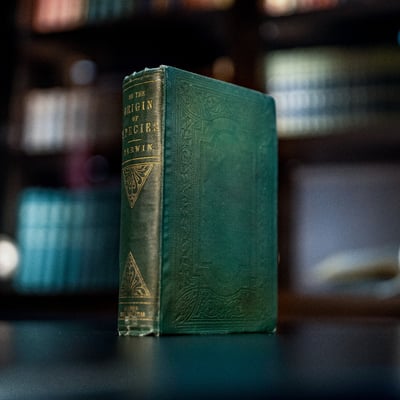
Showpiece has made it possible to own the book that changed the world. Find out more about our £275,000 first edition ‘On the Origin of Species’, and its incredible journey over 163 years. Available now from £50, find out more.
Embarking on our own adventure to discover Darwin-
We found out more about Darwin, his time on the HMS Beagle, observations and famous 'bee experiment' here:
https://naturalhistorymuseum.blog/2020/09/22/darwins-cargoes-digital-collections-programme/
http://friendsofdarwin.com/articles/sorely-tried/
https://libros.uchile.cl/files/presses/1/monographs/23/submission/proof/153/
https://www.britannica.com/biography/Charles-Darwin/The-Beagle-voyage
https://www.cambridgeblog.org/2014/11/what-charles-darwin-read-on-the-beagle/
https://www.nhm.ac.uk/discover/charles-darwins-octopus.html
https://link.springer.com/chapter/10.1007/978-3-319-34052-4_1
http://darwin-online.org.uk/EditorialIntroductions/Chancellor_GeologicalDiary.html
https://www.darwinproject.ac.uk/commentary/life-sciences/tale-two-bees

